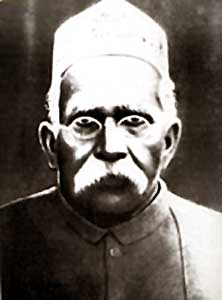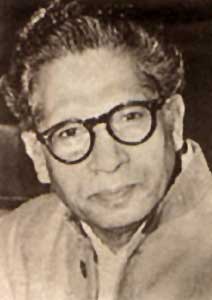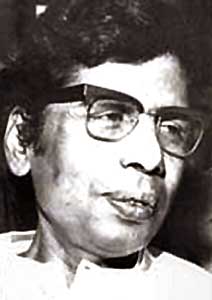 The Adhunik kal or the Modern Period in Hindi literature commenced in the middle of the 19th century. The most decisive evolution of this period was the germination of Khari boli prose and abundant use of this standard Hindi dialect in poetry instead of Braj bhasha. Modern Hindi literature has been divided into four phases, comprising: the age of Bharatendu or the Renaissance (1868-1893), Dwivedi Yug (1893-1918), Chhayavada Yug (1918-1937) and the Contemporary Period (1937 onwards).
The Adhunik kal or the Modern Period in Hindi literature commenced in the middle of the 19th century. The most decisive evolution of this period was the germination of Khari boli prose and abundant use of this standard Hindi dialect in poetry instead of Braj bhasha. Modern Hindi literature has been divided into four phases, comprising: the age of Bharatendu or the Renaissance (1868-1893), Dwivedi Yug (1893-1918), Chhayavada Yug (1918-1937) and the Contemporary Period (1937 onwards).
The age of Bharatendu is exquisitely redefined by Bharatendu Harishchandra (1849-1882), considered the Father of Modern Hindi Literature. Harishchandra had brought in a completely contemporary outlook in Hindi literature hence totally justifies his title. Mahavir Prasad Dwivedi, ennobling the Dwivedi yug, later had taken up the vision of Bharatendu Harishchandra. Mahavir Prasad Dwivedi was an out-and-out reformist, who had ushered in an elegant and graceful style of writing in Hindi poetry, which later acquired a much deeper moral tone. This was the age of revival, when the stateliness and magnificence of ancient Indian culture was fully embraced to enrich modern life. Social, political and economic problems were gradually mirrored in poetry, while songs that were composed, emoted a theme of social awakening. This trend aided much to the crucial emergence of National Cultural Poetry, whose leading poets were Makhanlal Chaturvedi, Balkrishna Shama `Navin`, Siyaram Gupta and `Dinkar`. These poets exerted more emphasis on the moral aspect of life rather than on love or beauty, which later evolved in the Chhayavada style of poetry.
 Kamayani was considered the most exalted point of this school of thought and Prasad, Nirala, Pant and Mahadevi best represented Chhayavada yug in the Adhunik kal of Hindi literature. After the downfall of this movement, the leftist ideology began to raise its head in a chronological sense, which found voice in two opposing styles of Hindi poetry. One was Progressivism and Prayogavada or later referred to as Nai Kavita. The former was an effort of translating Marx`s philosophy of Social realism into art. The most notable figure of this movement was Sumitranandan Pant. The latter had religiously made efforts to safeguard artistic freedom and brought in a new poetic content and talent, which reflected modern perceptivity. The pioneers of this trend were Aggeya, Girija Kumar, Mathur and Dharamvir Bharati. A third style called Personal Lyrics also had made an appearance, aiming at free and spontaneous human expressions with Harivansh Rai Bachchan serving as the leader of this trend. Harivansh Rai Bachchan indeed had bettered the world of Hindi poetry with his three exquisite collections comprising, Madhusala (1935), Madhubala (1936) and Madhukalas (1936). Bachchan`s poetry was considered wholly dissimilar from the romanticism of Chayavad and the ebullience of the Pragativad. His kind of poetry in Hindi contemporary period is sometimes referred to as `Hridayvad` or the poetry of passion.
Kamayani was considered the most exalted point of this school of thought and Prasad, Nirala, Pant and Mahadevi best represented Chhayavada yug in the Adhunik kal of Hindi literature. After the downfall of this movement, the leftist ideology began to raise its head in a chronological sense, which found voice in two opposing styles of Hindi poetry. One was Progressivism and Prayogavada or later referred to as Nai Kavita. The former was an effort of translating Marx`s philosophy of Social realism into art. The most notable figure of this movement was Sumitranandan Pant. The latter had religiously made efforts to safeguard artistic freedom and brought in a new poetic content and talent, which reflected modern perceptivity. The pioneers of this trend were Aggeya, Girija Kumar, Mathur and Dharamvir Bharati. A third style called Personal Lyrics also had made an appearance, aiming at free and spontaneous human expressions with Harivansh Rai Bachchan serving as the leader of this trend. Harivansh Rai Bachchan indeed had bettered the world of Hindi poetry with his three exquisite collections comprising, Madhusala (1935), Madhubala (1936) and Madhukalas (1936). Bachchan`s poetry was considered wholly dissimilar from the romanticism of Chayavad and the ebullience of the Pragativad. His kind of poetry in Hindi contemporary period is sometimes referred to as `Hridayvad` or the poetry of passion.
 The period of incessant and contemporary growth in the Adhunik kal of Hindi literature is represented by Jayshankar Prasad (Chaya, Akash Deep), Rai Krishna Das and Mahadevi Varma. Munshi Premchand (1880-1936) was the greatest loyalist in the field of fiction. His immortal works in fiction comprise: Sevasadana, Premasrama, Nirmala, Kayakalpa, Rangabhumi, Ghaban and Godan. His last novel Godan has been translated in all the possible languages of India. Other important fictional Hindi writers of the contemporary period comprise: Jainendra Kumar (Sunita and Tyagapatra, Sukhada, Vivarta), Phanishwar Nath Renu (Maila Anchal), Satchinanda Vatsyayan (Sekhar Ek Jivani), Dharamvir Bharati (Suraj Ka Satvan Ghoda), Yash Pal (Dada-comrade, Desh Drohi, Divya and Manusya Ke Rupa), Jagdamba Prasad Dikshit (Murdaghar) and Rahi Masoom Raza (Adha Gaon). Dr. Nagendra and Dr. Namwar Singh are the most respectable names in the arena of literary criticism. Upendranath `Ashk`, Jagdish Chandra Mathur (Konark), Lakshminarayan Lal (Sukha Sarovar) and Mohan Rakesh (Asadha Ka Ek Din, Lahraon Ke Rajahamsa and Adhe-Adhure) are renowned modern playwrights in Hindi.
The period of incessant and contemporary growth in the Adhunik kal of Hindi literature is represented by Jayshankar Prasad (Chaya, Akash Deep), Rai Krishna Das and Mahadevi Varma. Munshi Premchand (1880-1936) was the greatest loyalist in the field of fiction. His immortal works in fiction comprise: Sevasadana, Premasrama, Nirmala, Kayakalpa, Rangabhumi, Ghaban and Godan. His last novel Godan has been translated in all the possible languages of India. Other important fictional Hindi writers of the contemporary period comprise: Jainendra Kumar (Sunita and Tyagapatra, Sukhada, Vivarta), Phanishwar Nath Renu (Maila Anchal), Satchinanda Vatsyayan (Sekhar Ek Jivani), Dharamvir Bharati (Suraj Ka Satvan Ghoda), Yash Pal (Dada-comrade, Desh Drohi, Divya and Manusya Ke Rupa), Jagdamba Prasad Dikshit (Murdaghar) and Rahi Masoom Raza (Adha Gaon). Dr. Nagendra and Dr. Namwar Singh are the most respectable names in the arena of literary criticism. Upendranath `Ashk`, Jagdish Chandra Mathur (Konark), Lakshminarayan Lal (Sukha Sarovar) and Mohan Rakesh (Asadha Ka Ek Din, Lahraon Ke Rajahamsa and Adhe-Adhure) are renowned modern playwrights in Hindi.
The person who however ushered in an era of realism in the Hindi prose literature was Munshi Premchand, considered the most revered figure in the world of Hindi fiction and progressive movement. Before Munshi Premchand, Hindi literature in fact had pivoted around fairy or magical tales, stories of entertainment and religious themes. Premchand`s novels have since his advent, been translated into countless other languages. The history of Hindi literature, thus, extends well over a period of almost one thousand years.













